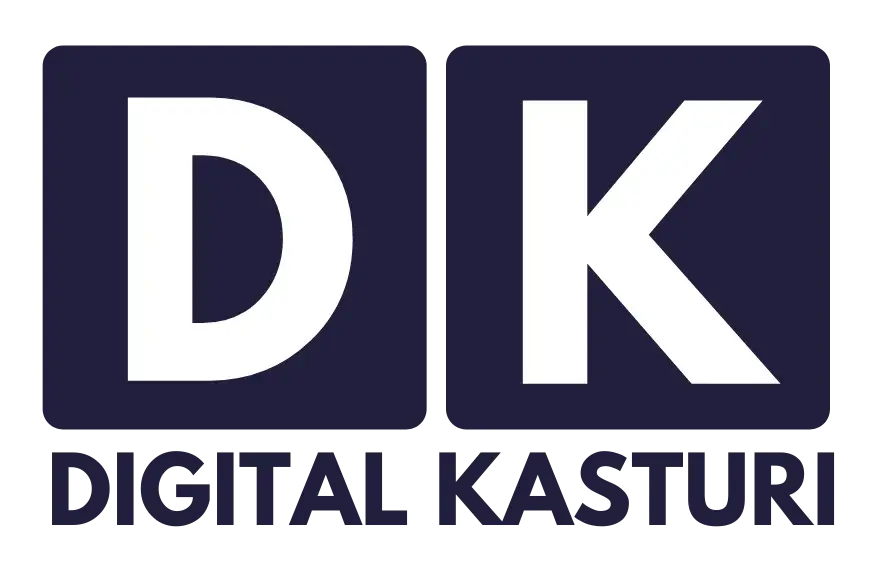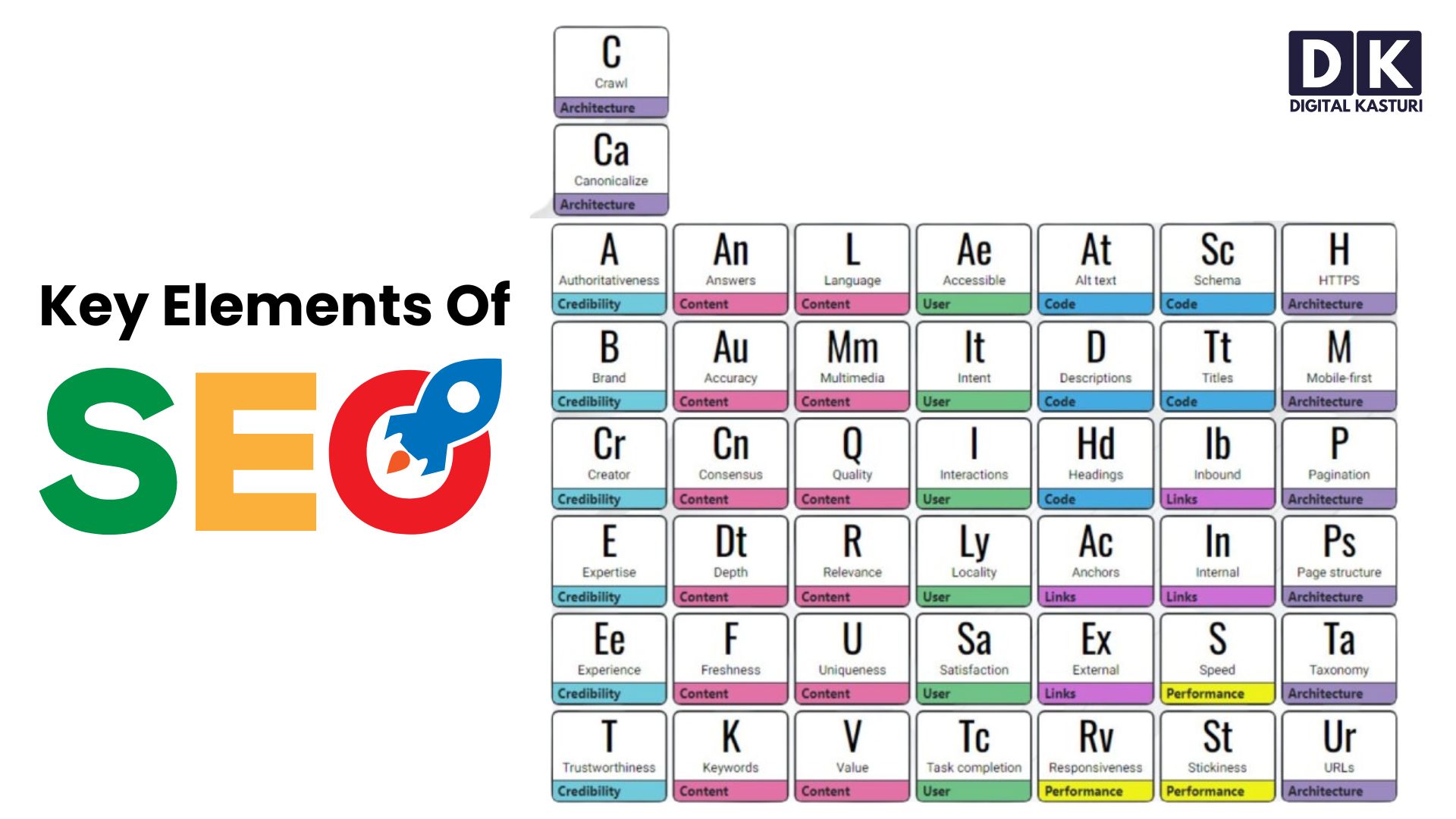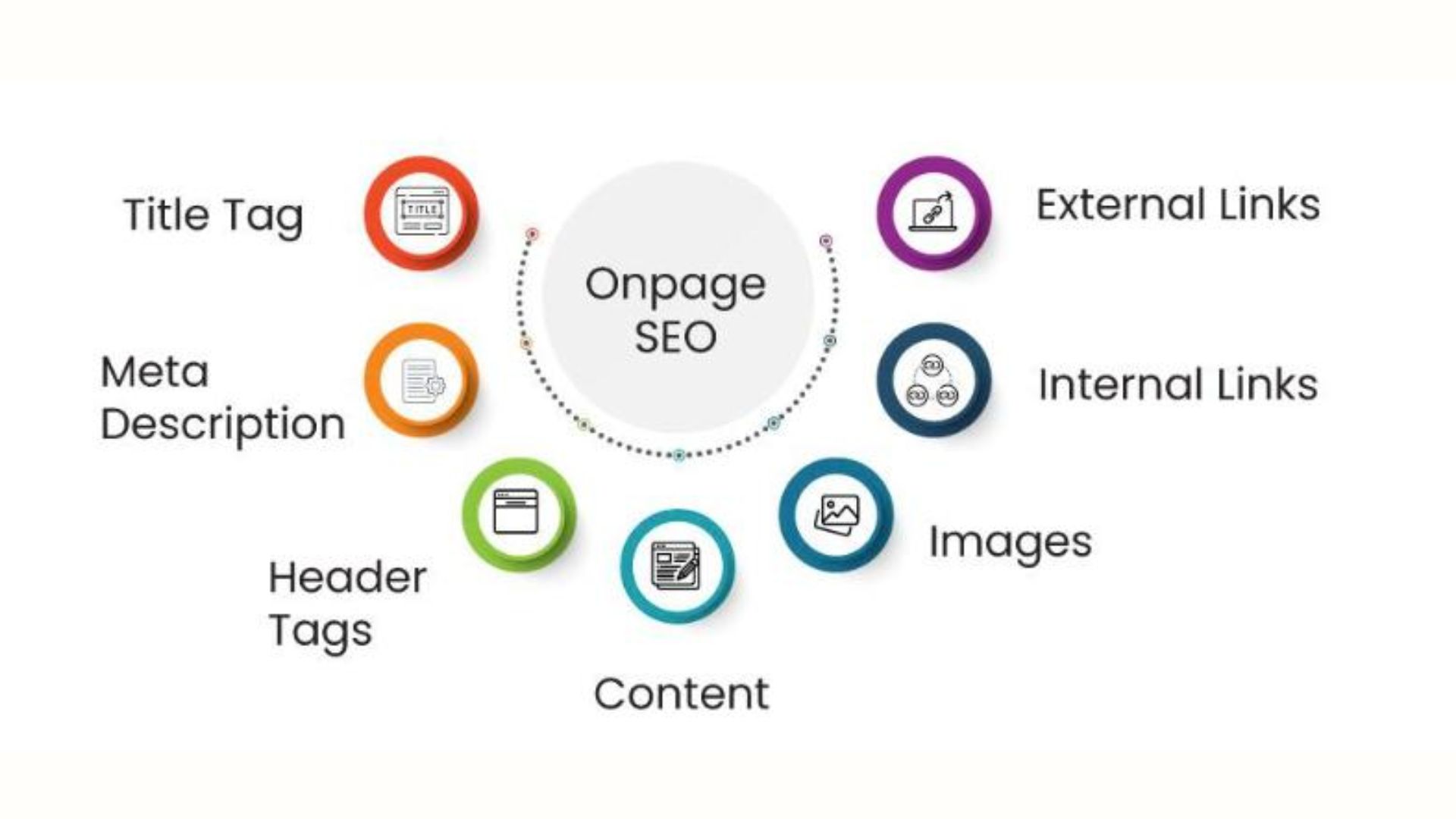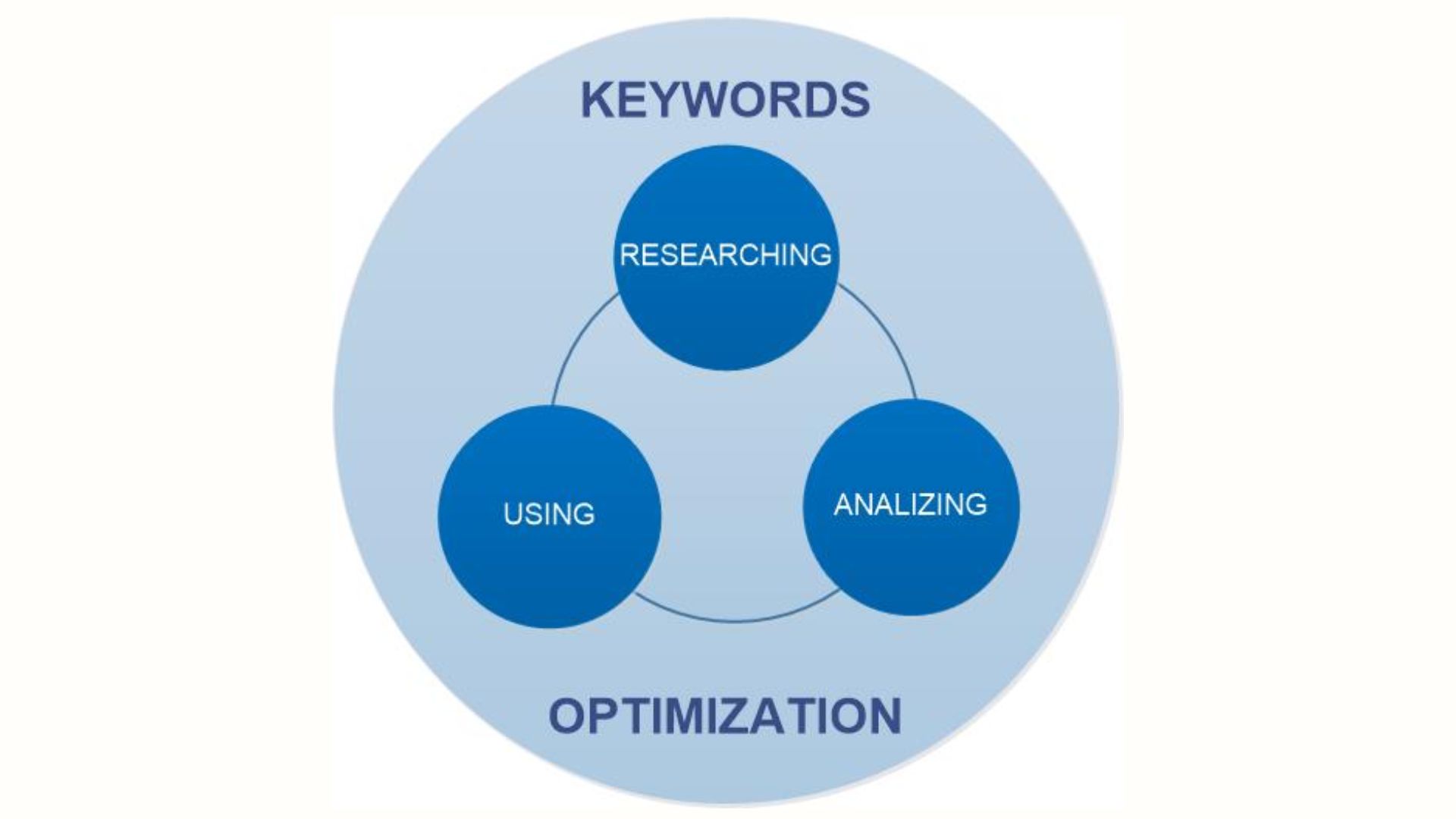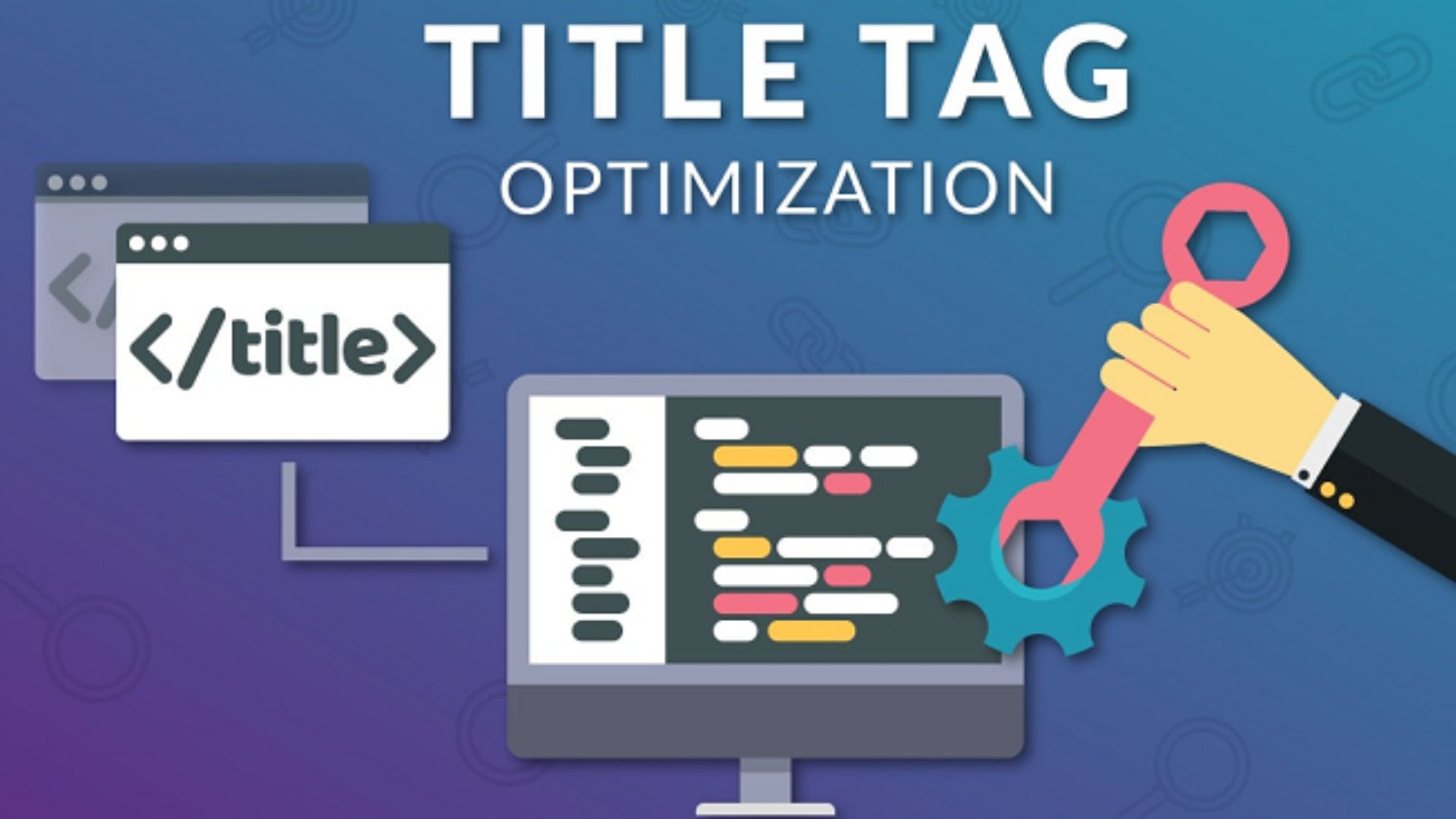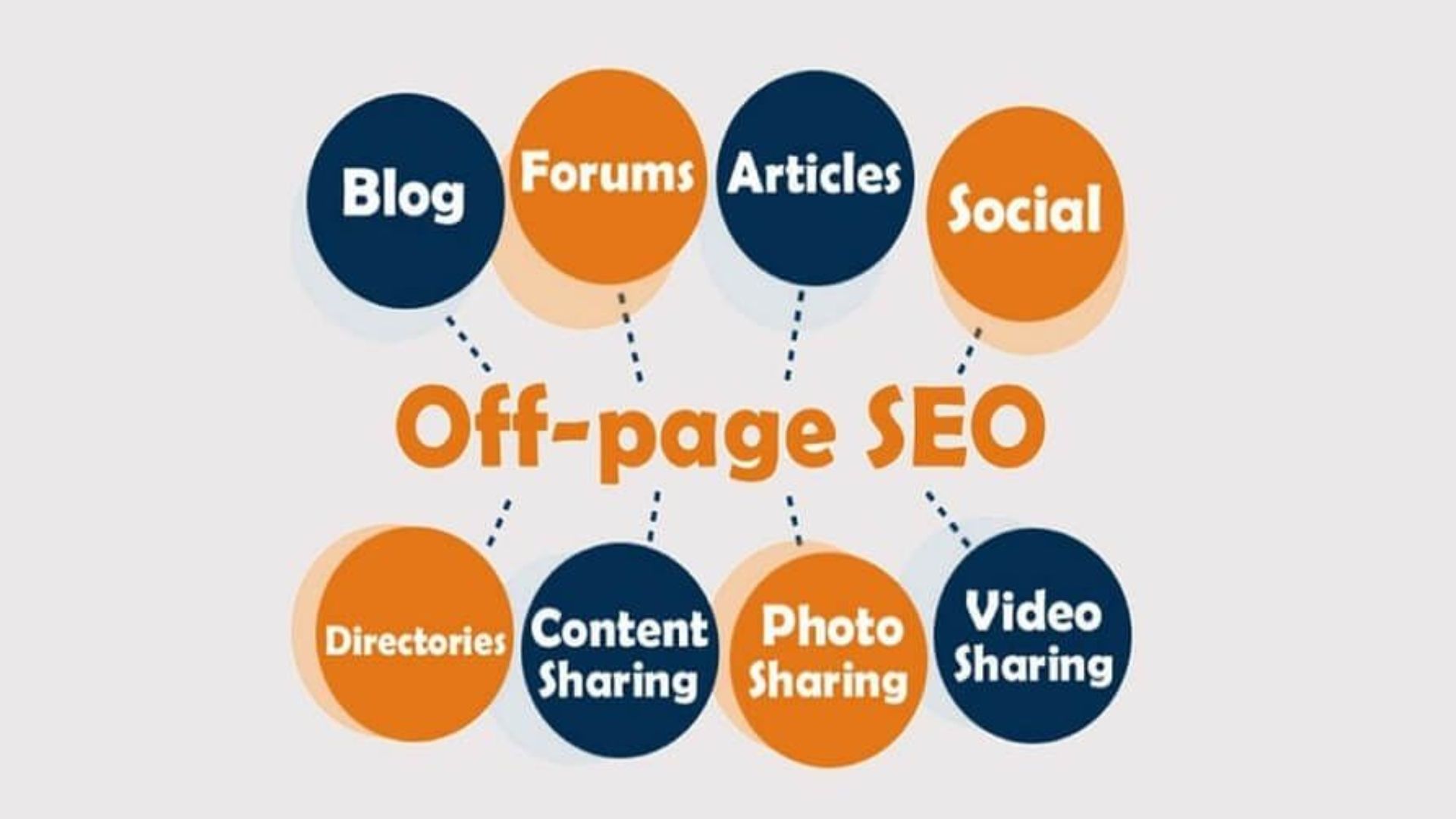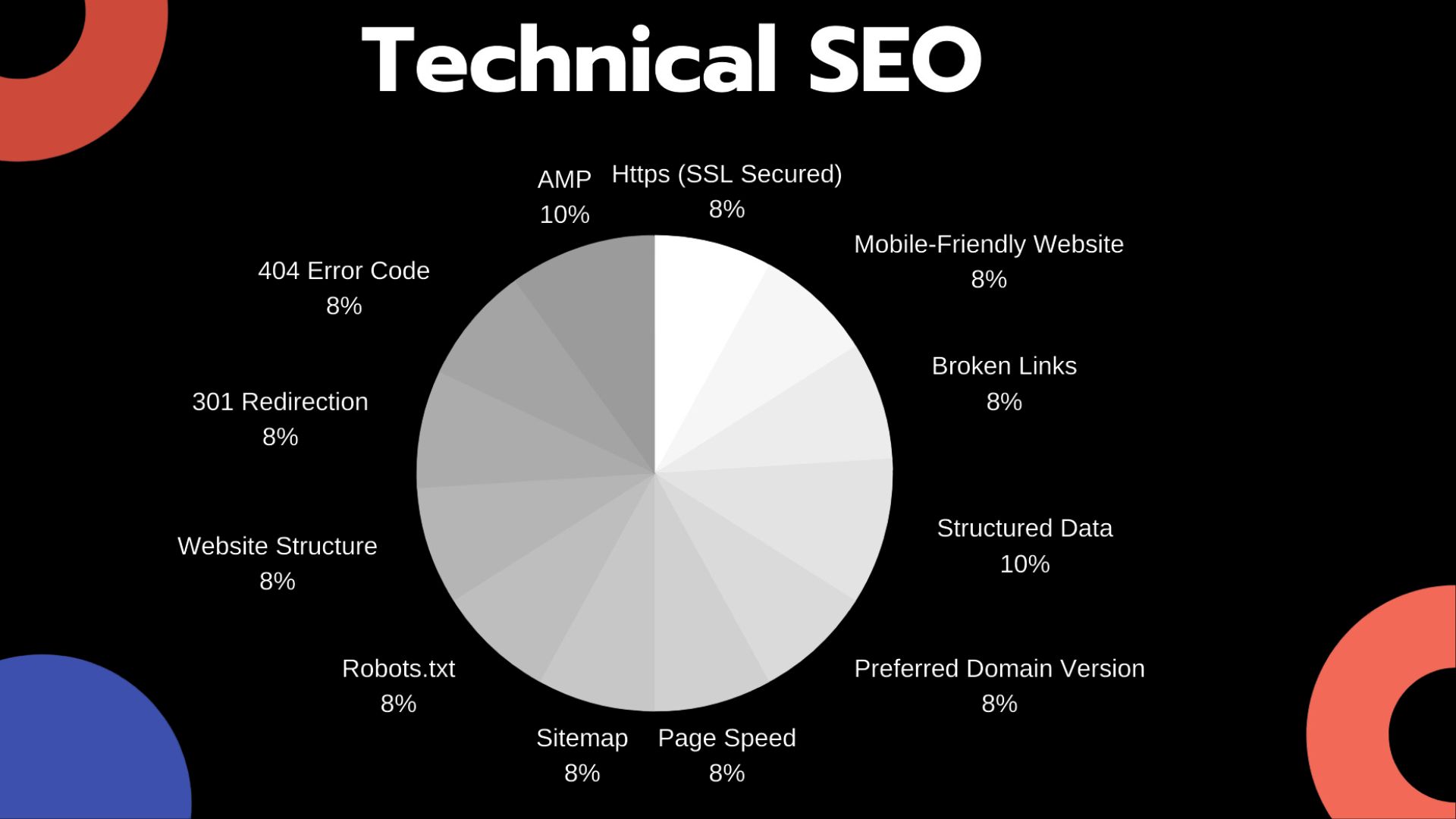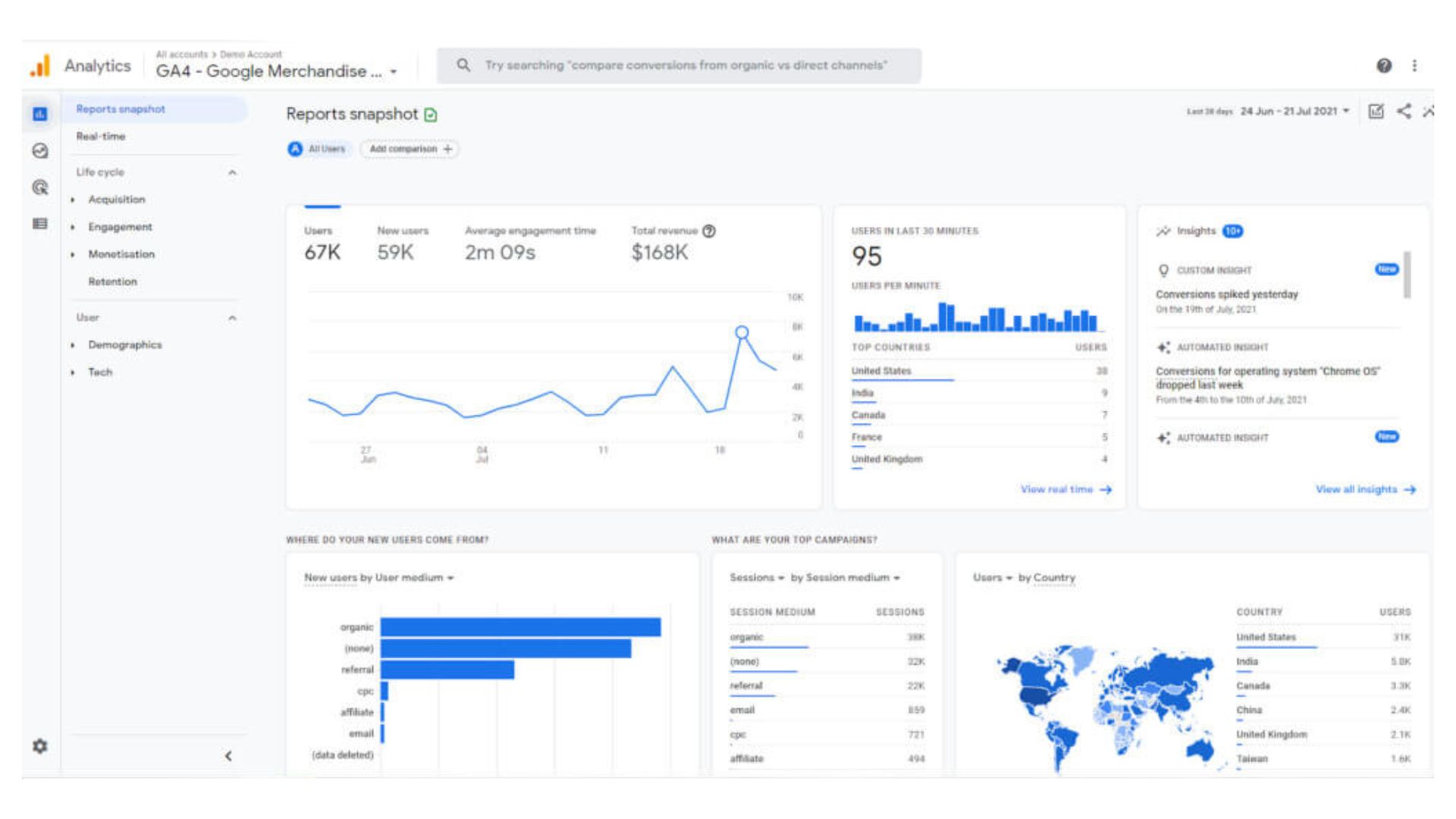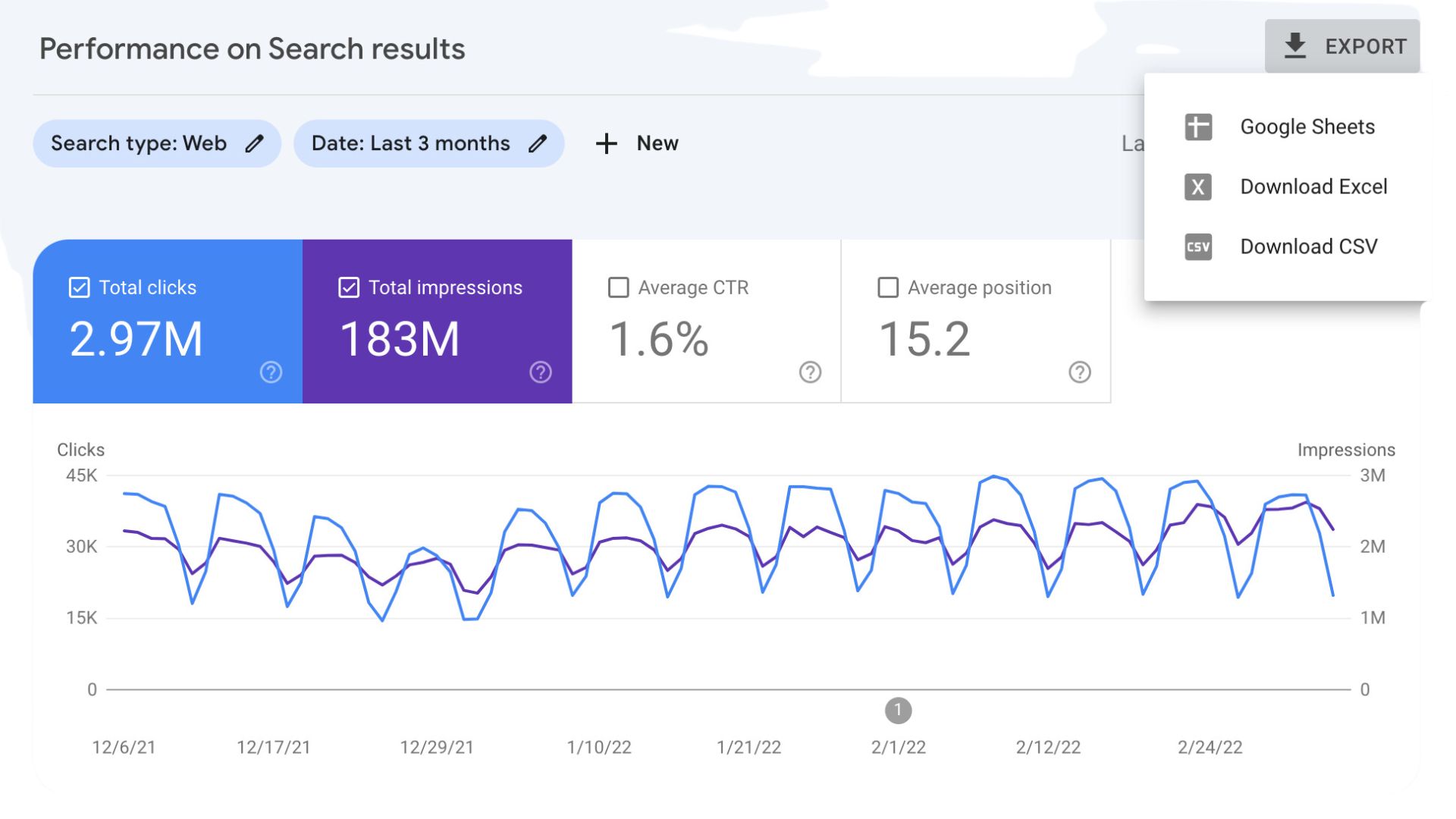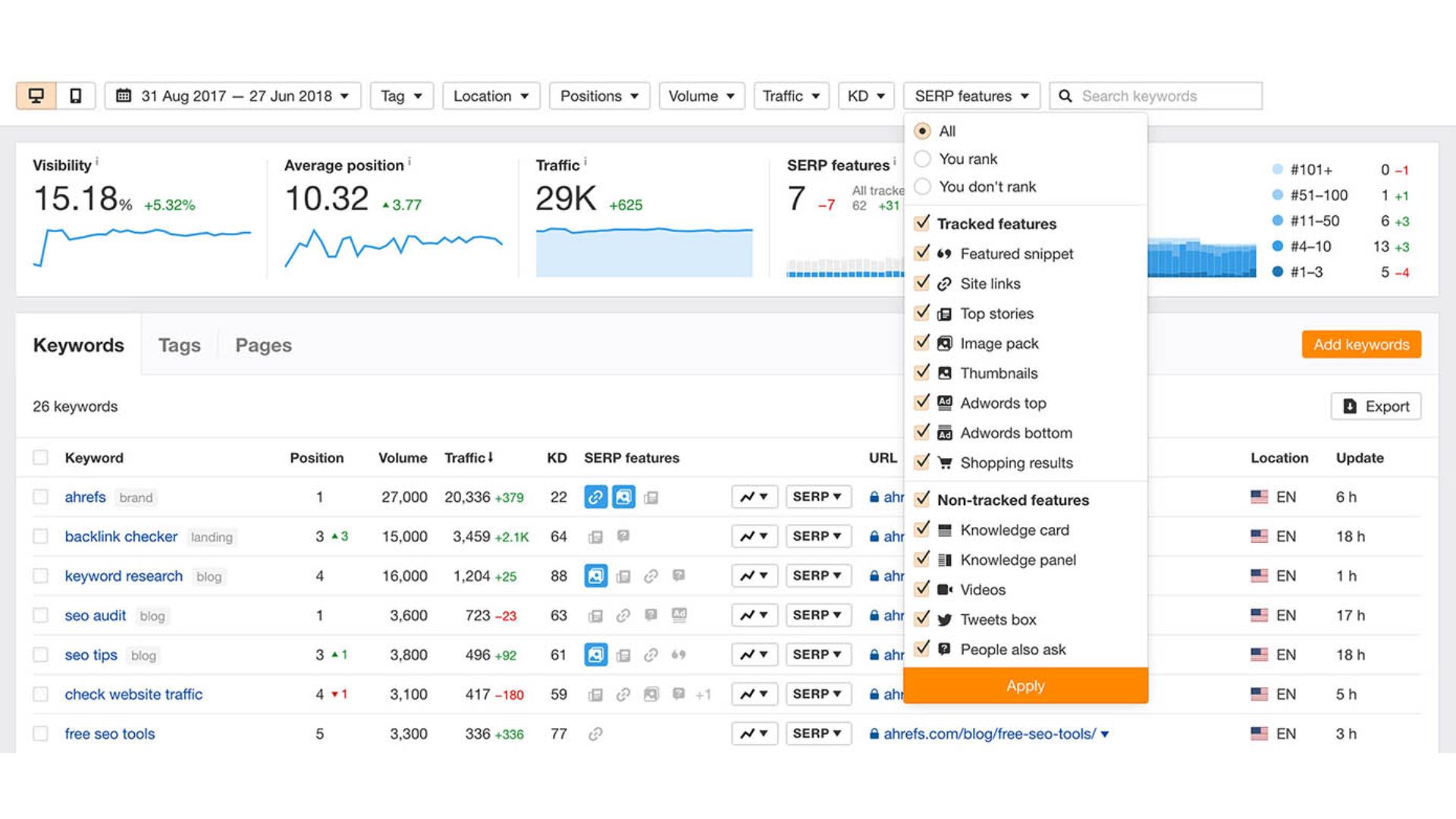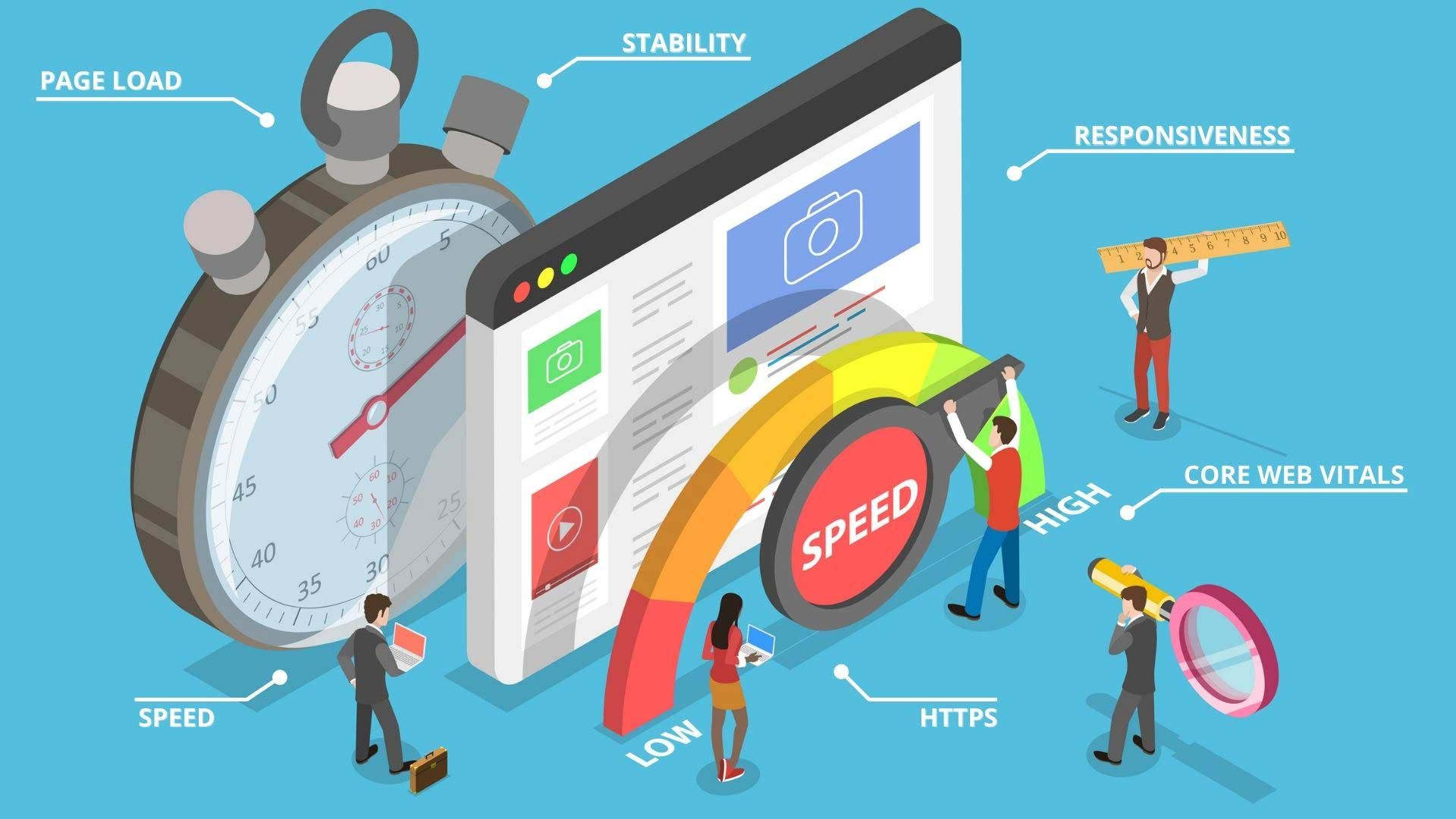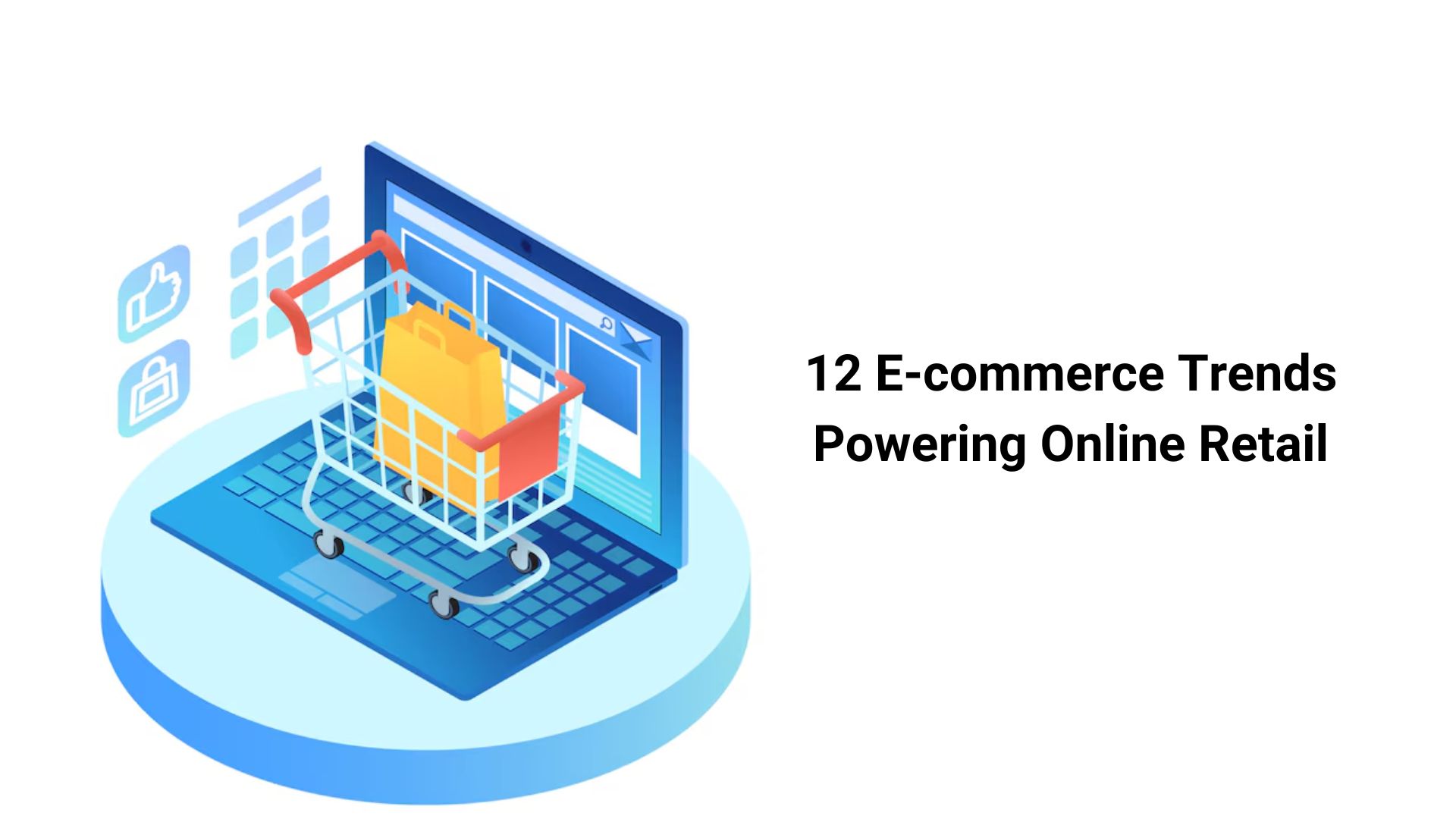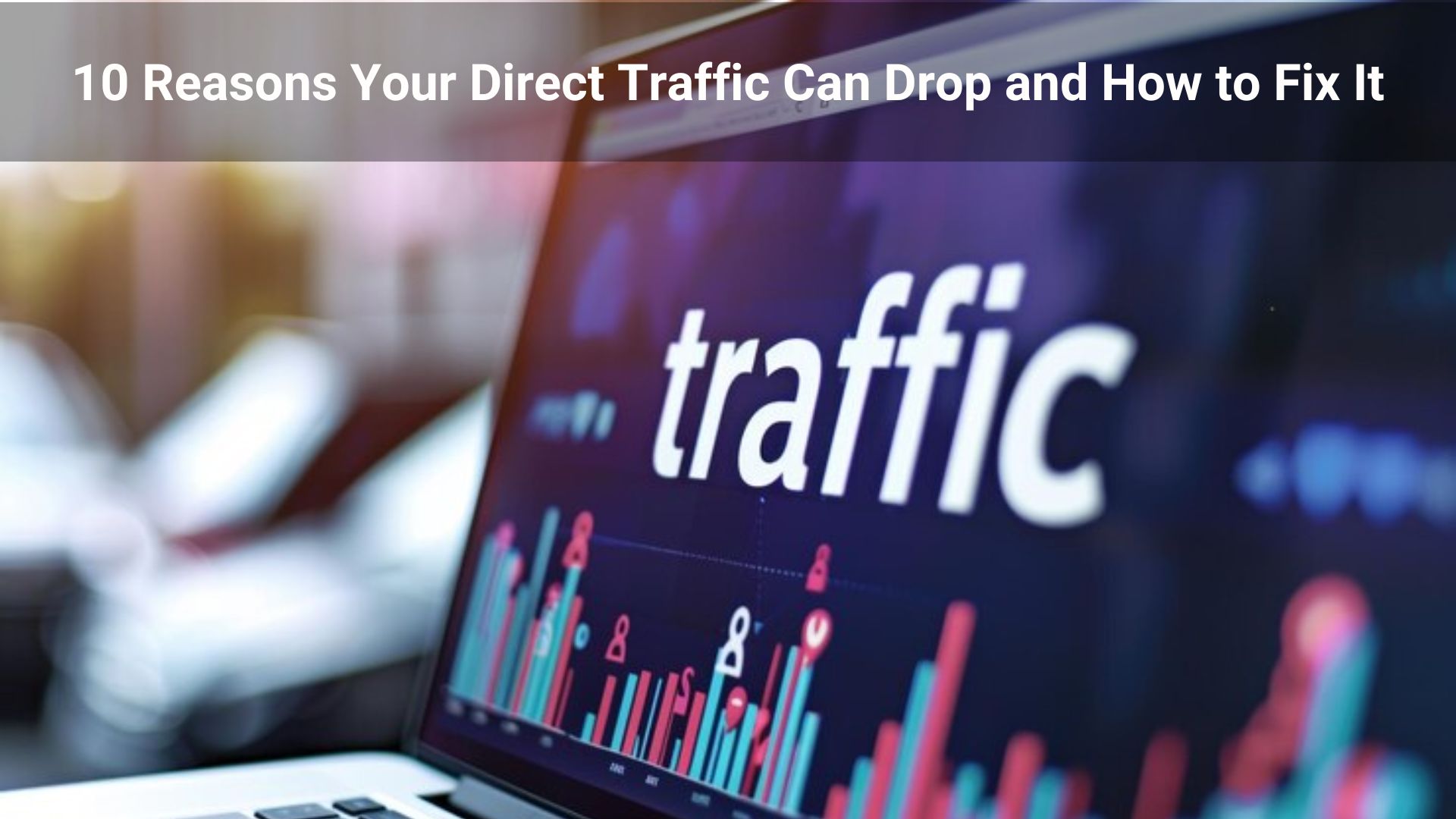Introduction
Search Engine Optimization (SEO) is essential for businesses to rank higher on search engine results pages (SERPs), gain visibility, and drive organic traffic. Whether you’re a small business or a large enterprise, understanding the key elements of SEO is crucial for online success. In this blog, we’ll break down the most critical components of SEO, explain how they work, and provide insights into how you can apply them to improve your online presence.
On-Page SEO: A Comprehensive Guide
On-page SEO is a crucial aspect of search engine optimization that focuses on optimizing individual web pages to improve their search engine rankings and attract more relevant traffic. It encompasses both the content and HTML source code of a page, making it a foundational element of any successful SEO strategy.
1. Keyword Optimization
Keyword optimization involves selecting and strategically placing relevant keywords within your web page content to align with what users are searching for. Effective keyword optimization ensures that your content is discoverable by search engines and relevant to the queries of your target audience.
- Keyword Research: Start by researching keywords that are relevant to your industry, product, or service. Use tools like Google Keyword Planner, SEMrush, and Ahrefs to identify high-traffic keywords and search terms that your target audience is using.
- Keyword Placement: Incorporate these keywords naturally into key areas of your page:
- Title Tags: Include your primary keyword in the title tag, which appears on search engine results pages (SERPs) and browser tabs.
- Headings: Use H1 tags for main headings and H2, H3 tags for subheadings. Include relevant keywords to help search engines understand the content structure.
- Content: Integrate keywords throughout the content in a natural and contextually appropriate manner.
- URL: Include keywords in the URL structure of your pages to make them more search engine-friendly.
PRO TIP: Regularly update your keyword list based on changing trends and search behaviours. Tools like Google Trends and keyword research tools can provide insights into current search patterns.
2. Meta Tags
Meta tags are snippets of text in the HTML source code that provide information about the content of a web page. Optimizing meta tags is essential for improving click-through rates and enhancing search engine visibility.
- Title Tags: The title tag is a critical on-page SEO element that appears as the clickable headline on SERPs. Ensure it is compelling and includes the main keyword for the page. Keep it under 60 characters to avoid truncation.
- Meta Descriptions: Meta descriptions provide a brief summary of the page content. Although they don’t directly impact rankings, a well-written meta description can increase click-through rates. Aim for 150-160 characters and include relevant keywords.
- Header Tags (H1, H2, H3, H4, H5, H6): Header tags help organize content and improve readability. Use H1 tags for the main title of the page, and H2, H3, H4, H5, H6 tags for subheadings. Incorporate keywords into these headers to signal the content’s relevance to search engines.
3. Content Quality
Content quality is a significant ranking factor for search engines. High-quality content not only attracts visitors but also encourages them to stay longer and engage with your site.
- Relevance: Ensure that your content meets the search intent of your audience. Address their questions, solve their problems, and provide valuable information.
- Originality: Produce original content that offers unique insights or perspectives. Avoid duplicating content from other sources, as search engines prioritize unique and valuable content.
- Readability: Write in a clear, concise manner. Use short paragraphs, bullet points, and headings to make the content easy to read and understand.
- Engagement: Include multimedia elements such as images, videos, and infographics to enhance the user experience and keep visitors engaged.
PRO TIP: Regularly update your content to keep it relevant and accurate. Fresh content is favored by search engines and can help maintain or improve rankings.
4. Internal Linking
Internal linking involves linking to other pages within your own website. This practice helps search engines understand the structure and hierarchy of your site while guiding users to related content.
- Link Structure: Use descriptive anchor text that clearly indicates the content of the linked page. Avoid generic phrases like “click here.”
- Contextual Links: Place internal links within the content where they are contextually relevant. This enhances the user experience by providing additional resources and information.
- Sitemap: Create a sitemap to ensure that all important pages are easily accessible to both search engines and users.
PRO TIP: Regularly audit your internal links to ensure they are working correctly and update any broken links. A well-structured internal linking strategy can help improve page authority and user navigation.
Summary
Effective on-page SEO involves optimizing various elements on your web pages to improve search engine rankings and drive relevant traffic. By focusing on keyword optimization, meta tags, content quality, and internal linking, you can enhance your site’s visibility and user experience. Regularly updating your strategies and using tools for keyword research and performance tracking will help you stay ahead in the competitive landscape of SEO.
Off-Page SEO: Enhancing Your Website’s Authority Beyond the Page
Off-page SEO encompasses the strategies and actions taken outside of your website to influence its ranking on search engine results pages (SERPs). Unlike on-page SEO, which deals with optimizing elements within your website, off-page SEO focuses on building your site’s authority and reputation through external efforts.
1. Backlinking
Backlinking involves acquiring links from other reputable websites to your own. These backlinks act as endorsements, signaling to search engines that your content is valuable and trustworthy.
- Quality Over Quantity: Focus on earning backlinks from high-authority and relevant sites rather than seeking numerous low-quality links. High-quality backlinks from reputable sites have a more significant impact on your site’s credibility and ranking.
- Natural Link Building: Aim to obtain backlinks naturally through high-quality content and relationships. Avoid manipulative tactics like link schemes or buying links, as these can lead to penalties from search engines.
PRO TIP: Utilize tools like Ahrefs or Moz to monitor your backlink profile and identify opportunities for acquiring high-quality links. Regularly assess your backlink strategy to ensure it aligns with current best practices.
2. Social Media Marketing
Social media marketing involves promoting your content across various social media platforms to increase visibility and drive traffic to your site.
- Content Sharing: Share your blog posts, articles, and other valuable content on platforms like Facebook, Twitter, LinkedIn, and Instagram. This can help attract more visitors and generate engagement with your brand.
- Audience Engagement: Interact with your audience by responding to comments, participating in discussions, and sharing relevant content. Building a strong social media presence can enhance your brand’s reputation and authority.
PRO TIP: Use social media analytics tools to track the performance of your posts and identify which types of content generate the most engagement. Tailor your social media strategy based on these insights to maximize impact.
3. Guest Blogging
Guest blogging involves writing articles for other blogs within your industry or niche. This practice offers several benefits, including increased exposure and valuable backlinks.
- Targeted Outreach: Identify reputable blogs and websites in your niche where you can contribute guest posts. Ensure that the sites you target have a strong readership and align with your industry or topic.
- Quality Content: Write high-quality, informative content that provides value to the audience of the host blog. Include relevant links to your site within the content to drive traffic and enhance your backlink profile.
PRO TIP: Build relationships with other bloggers and website owners in your industry to increase opportunities for guest blogging. Personalize your outreach efforts and pitch topics that align with your audience’s interests.
4. Market Insight
Understanding the impact of off-page SEO activities can help you gauge their effectiveness. According to industry studies, websites with a robust backlink profile tend to rank 35% higher on SERPs compared to those with fewer backlinks. This demonstrates the significant role that backlinks play in improving search engine rankings.
- Backlink Analysis: Regularly analyze your backlink profile and compare it with competitors to understand your site’s standing and identify areas for improvement.
- Competitor Research: Investigate the backlink strategies of competitors to uncover potential opportunities for gaining similar links and improving your site’s authority.
PRO TIP: Utilize tools like Google Analytics and SEMrush to track the impact of your off-page SEO efforts on traffic and rankings. This will help you refine your strategy and focus on the most effective tactics.
Summary
Off-page SEO is essential for building your website’s authority and enhancing its visibility on search engine results pages. By focusing on high-quality backlinking, effective social media marketing, guest blogging, and leveraging market insights, you can significantly improve your site’s search engine rankings and attract more relevant traffic. Regularly evaluate your off-page SEO strategies and stay updated with industry best practices to maintain and enhance your site’s authority.
Technical SEO: Enhancing Website Performance for Search Engines and Users
Technical SEO focuses on optimizing the underlying technical aspects of a website to ensure it is easily crawled and indexed by search engines. A well-executed technical SEO strategy improves user experience, boosts search engine visibility, and strengthens overall site performance.
1. Site Speed
Site speed plays a critical role in both user experience and search engine rankings. Google prioritizes faster websites because they provide a better user experience, leading to lower bounce rates and higher engagement.
- Faster Loading Times: A faster website not only improves the user experience but also ranks better on search engines. Studies show that sites with load times under 2 seconds have a significantly lower bounce rate.
- PageSpeed Insights: Tools like Google PageSpeed Insights can help you analyze your site’s loading speed and offer suggestions to improve it.
Market Insight: Websites that load within 3 seconds experience 32% fewer bounce rates compared to those that take longer to load.
PRO TIP: Compress images, minimize HTTP requests, and leverage browser caching to improve your site’s loading speed. Use a Content Delivery Network (CDN) to further enhance speed for users around the globe.
2. Mobile-Friendliness
Mobile-friendliness is now a priority, as Google uses mobile-first indexing. This means that Google primarily uses the mobile version of a website to rank it, making mobile optimization a crucial factor for search engine rankings.
- Responsive Design: Ensure your website is fully responsive and adjusts to different screen sizes. Mobile users account for more than 50% of global web traffic, so a mobile-optimized site is vital for retaining visitors.
- Mobile Usability Testing: Test your site using Google’s Mobile-Friendly Test tool to identify issues and improve mobile user experience.
Market Insight: Google reports that 70% of users are more likely to revisit a mobile-friendly website, emphasizing the importance of mobile optimization.
PRO TIP: Optimize font sizes, button placements, and navigation menus for mobile users. Avoid using pop-ups or large banners that may hinder the mobile experience.
3. Sitemaps
A sitemap is a file that provides search engines with a blueprint of your website’s structure, helping them to crawl and index pages more efficiently. It lists all important URLs on your site, making it easier for search engines to discover content.
- XML Sitemaps: Create and submit an XML sitemap to Google Search Console and other search engines. This helps search engines understand the hierarchy and importance of the content on your website.
- Regular Updates: Update your sitemap whenever you add new pages or make significant changes to your site structure to ensure search engines are always indexing your latest content.
PRO TIP: Use tools like Yoast SEO or Screaming Frog to generate and submit your XML sitemap easily. Keep the sitemap simple by avoiding unnecessary URLs or low-quality content.
4. Structured Data
Structured data (also called schema markup) helps search engines understand your content more effectively by providing additional context. This can lead to rich snippets in search results, such as star ratings, product information, or event details.
- Rich Snippets: Implementing structured data can increase your site’s visibility and click-through rate by displaying rich snippets, which provide more detailed information directly in search results.
- Schema.org: Use the Schema.org vocabulary to add structured data to your site, improving how search engines interpret your content.
PRO TIP: Use Google’s Structured Data Testing Tool to validate and test your schema markup. Aim to use structured data on key pages, such as product, event, or review pages, to enhance your site’s visibility.
5. HTTPS and Secure Browsing
Switching from HTTP to HTTPS is essential for both security and SEO. Google considers site security as a ranking factor, and users prefer browsing secure websites that protect their data.
- SSL Certificate: Ensure your site has an SSL certificate to enable HTTPS. This secures the data exchanged between the user and your website, building trust and improving search rankings.
- Google Warning: Sites without HTTPS display a “Not Secure” warning in browsers, which can drive visitors away and increase bounce rates.
Market Insight: Over 85% of websites that rank on the first page of Google use HTTPS, highlighting its importance for SEO.
PRO TIP: Implement an SSL certificate as soon as possible and perform regular security audits to ensure your site remains secure and compliant with best practices.
| Table: Page Speed Comparison | ||
| Website Speed | Bounce Rate | Conversion Rate |
| Fast (1-3 sec) | 9% | 12% |
| Medium (4-6 sec) | 24% | 5% |
| Slow (7+ sec) | 38% | 2% |
Local SEO: Boosting Visibility in Regional Searches
Local SEO is crucial for businesses that serve specific geographic areas, ensuring they appear in relevant local search results. For businesses in Texas, local SEO can be a game-changer, helping them target a specific audience and rank for region-specific keywords like “SEO services in Texas.” Optimizing for local searches increases the likelihood of attracting nearby customers who are actively looking for your services.
1. Google Profile
Setting up and optimizing your Google Profile is the first step in local SEO. A fully optimized GMB listing helps your business appear in local search results and Google Maps.
- Accurate Information: Make sure your business name, address, phone number (NAP), and hours of operation are accurate and up-to-date.
- Photos and Updates: Add high-quality photos of your business, products, or services, and post regular updates to engage with your local audience.
Market Insight: Businesses that regularly update their GMB profiles are 2.7 times more likely to be considered reputable by consumers.
PRO TIP: Use relevant local keywords in your business description on GMB and encourage satisfied customers to leave positive reviews. High ratings can boost your local rankings.
2. Local Keywords
Using local keywords is essential to rank for specific searches within your region. For instance, if you’re offering SEO services in Texas, you can target queries like “Austin SEO company” or “Dallas SEO services.”
- Keyword Research: Conduct thorough keyword research to find region-specific search terms that potential customers in your area are using.
- Location Pages: If your business serves multiple locations, create dedicated pages for each city or region with unique content tailored to local audiences.
Texas Insight: Texas is a vast state with thriving business hubs like Houston, Austin, and Dallas. By targeting each city with specific local keywords, you can capture a broader, more localized audience.
3. Local Citations
Local citations refer to online mentions of your business name, address, and phone number on external websites. These citations can help boost your visibility in local searches and improve your local SEO rankings.
- Directories and Listings: Ensure your business is listed in relevant local directories like Yelp, Yellow Pages, TripAdvisor, and local chambers of commerce.
- NAP Consistency: Consistency is key—make sure your business name, address, and phone number are listed the same across all citations.
PRO TIP: Use tools like Moz Local or BrightLocal to audit your citations and ensure consistency across the web. Inconsistent NAP data can hurt your local rankings.
4. Local Backlinks
Backlinks from local websites and directories can enhance your local SEO efforts. High-quality local backlinks signal to search engines that your business is relevant and trusted in your region.
- Collaborate with Local Partners: Partner with local organizations, blogs, or news outlets to earn backlinks that will improve your local authority.
- Sponsorships and Events: Sponsor local events or collaborate with community groups, and in return, request a backlink to your site from their event page or website.
Market Insight: Businesses that acquire backlinks from local authority sites see a 20% increase in their local search rankings on average.
5. Localized Content
Creating localized content that speaks to the needs and interests of your target audience in specific regions helps improve your local SEO.
- Blogging: Write blog posts about local events, businesses, or industry news relevant to your target audience.
- City-Specific Landing Pages: Develop landing pages tailored to individual cities or neighborhoods where you provide services.
Texas Insight: With Texas being one of the largest and most competitive markets, businesses in cities like Austin, Houston, and Dallas should produce locally-focused content to capture the attention of potential customers.
PRO TIP: Include local events or news updates in your blog to show search engines and users that you’re active within your community. This improves engagement and SEO.
Content Marketing: The Heart of SEO Success
In the realm of SEO, content marketing plays a crucial role in improving search visibility and driving engagement. By producing high-quality, valuable content that addresses the needs of your audience, you not only improve your SEO performance but also build trust with your users. SEO and content marketing go hand-in-hand, as great content helps your website rank better while drawing in a relevant audience.
1. Blogging
Blogging remains one of the most powerful tools in content marketing. By writing articles that address your audience’s pain points, questions, and interests, you can attract organic traffic to your site.
- Target Audience: Create blog posts that focus on what your target audience is searching for. This can include answering common questions, solving problems, or discussing industry trends.
- SEO-Optimized Content: Include relevant keywords naturally in your blog posts to improve search engine rankings.
Market Insight: Blogging has been shown to drive 55% more visitors to websites and 97% more inbound links, which significantly improves SEO.
PRO TIP: Use tools like Google Analytics and SEMrush to track which blog topics perform well, then update your strategy accordingly to maximize engagement.
2. Visual Content
Visual content such as videos, infographics, and images is a powerful way to engage users. People are more likely to share visual content, which in turn helps increase website traffic and improve SEO performance.
- Videos: Incorporate video content into your blogs or landing pages. Videos can explain complex topics or showcase products more effectively.
- Infographics: Use infographics to summarize data or present information in an engaging and easily digestible format.
- Images: Optimize images with appropriate file names and alt text to boost search engine visibility.
Market Insight: Studies show that posts with visuals get 94% more views than those without, and video content has a 50 times greater chance of ranking organically in Google.
3. Content Updates
Regularly refreshing your old content is critical to maintaining relevance in the fast-changing world of SEO. Search engines prioritize websites that offer fresh and updated information.
- Update Old Posts: Review your older blog posts and update them with the latest information, statistics, or new insights. This will keep the content relevant and continue to drive traffic.
- Repurpose Content: Convert well-performing blog posts into different formats like videos, podcasts, or infographics to reach a wider audience.
Market Insight: Websites that update their content regularly have 61% more chances to rank in the top positions of search engine results pages (SERPs).
PRO TIP: Set up a content calendar to review and update older blog posts every 6-12 months to keep them fresh and maintain high rankings.
4. Content Distribution
Creating great content is only half the battle; you need to ensure it reaches your audience through content distribution. Sharing your content across various channels increases its visibility and drives more traffic to your site.
- Social Media Sharing: Post your blog articles, videos, and infographics on social media platforms like Facebook, Twitter, LinkedIn, and Instagram.
- Email Marketing: Share new blog posts and content updates with your email subscribers to encourage repeat visits and engagement.
- Guest Posting: Write guest blog posts for reputable websites in your industry to gain backlinks and build authority.
PRO TIP: Use social media automation tools like Buffer or Hootsuite to schedule and promote your content consistently. This will save time and ensure your content reaches a broader audience.
5. SEO-Optimized Content Creation
When creating content, ensure it’s optimized for SEO to improve rankings and drive more traffic.
- Keyword Research: Perform thorough keyword research to understand what your target audience is searching for. Use those keywords naturally within your content.
- Meta Descriptions: Write compelling meta descriptions that accurately describe your content and encourage clicks.
- Internal Links: Incorporate internal links that guide readers to other valuable pages on your site, improving user experience and keeping them engaged longer.
PRO TIP: Use tools like Yoast SEO or Rank Math to ensure your content is fully optimized for search engines, with proper keyword usage, meta tags, and readability scores.
User Experience (UX): Enhancing SEO Through Seamless Navigation
User experience (UX) has become a key factor in determining a website’s ranking on search engines like Google. A website that is easy to navigate, responsive on all devices, and provides a positive user experience is more likely to rank higher. Improving UX is essential not only for better SEO but also for increasing user engagement and satisfaction.
1. Page Speed
A critical aspect of UX is page speed. Visitors are likely to leave a website if it takes too long to load, leading to high bounce rates and lower rankings.
- Image Optimization: Compress and resize images to reduce file sizes without compromising quality.
- Minify Code: Reduce unnecessary code (CSS, HTML, and JavaScript) to improve load times.
Market Insight: According to studies, pages that load in under 2 seconds have a 50% lower bounce rate than those that take longer.
PRO TIP: Use tools like Google PageSpeed Insights or GTmetrix to test your site’s loading time and identify areas for improvement.
2. Navigation
Simplifying your website’s navigation enhances user experience by making it easier for visitors to find the information they’re looking for. A well-structured site helps users move through pages efficiently, improving their overall experience and engagement.
- Clear Menus: Use concise and descriptive menu titles that accurately represent the content.
- Breadcrumbs: Implement breadcrumb navigation so users can easily trace their steps back to previous pages.
Market Insight: Studies show that 94% of users value easy navigation when visiting a website.
PRO TIP: Use analytics tools to identify pages with high exit rates. These pages may need improved navigation to encourage users to explore further.
3. Design
A clean and professional design is essential for a positive user experience. The website should be visually appealing and easy to read on all devices, especially mobile, as more users access the web from smartphones and tablets.
- Responsive Design: Ensure your website is mobile-friendly and adapts to different screen sizes.
- Readable Fonts: Choose fonts and colors that are easy to read and ensure sufficient contrast between text and background.
Market Insight: Mobile devices account for over 50% of global website traffic, making mobile-friendliness a crucial factor in user experience.
PRO TIP: Conduct A/B testing to compare different design elements (e.g., colors, and layouts) and determine what drives higher engagement and conversion rates.
4. Heatmaps for Optimization
Understanding how users interact with your website is key to improving UX. Heatmaps can help identify where visitors click, scroll, and spend the most time, providing valuable insights for optimizing your pages.
- Click Maps: Analyze where users are clicking most to understand their behavior.
- Scroll Maps: See how far users scroll down the page and ensure important content is visible.
PRO TIP: Use heatmap tools like Hotjar or Crazy Egg to analyze user behavior. Optimize page elements based on where users engage most or where they drop off.
SEO Analytics and Reporting: Measuring Your SEO Success
Effective SEO analytics and reporting are essential for evaluating the impact of your SEO strategies. By tracking key performance indicators (KPIs), you can assess what is working, identify areas for improvement, and make data-driven decisions to optimize your efforts. Regular monitoring allows for continuous refinement, keeping your SEO strategy aligned with your business goals.
1. Google Analytics
Google Analytics is a must-have tool for tracking website performance. It offers insights into user behavior, website traffic, bounce rates, and conversions.
- Traffic Insights: Understand where your visitors are coming from (organic search, social media, direct, etc.).
- Bounce Rates: Measure how many visitors leave your site after viewing only one page.
- Conversion Tracking: Track the number of leads or sales generated from your website.
Market Insight: Companies that monitor and analyze their web traffic see a 25% higher chance of converting visitors into customers.
PRO TIP: Set up custom goals and events in Google Analytics to track specific user actions, such as form submissions or downloads.
2. Google Search Console
Google Search Console provides essential insights into how Google views your site. It helps you track your website’s indexing status, optimize for search visibility, and resolve technical SEO issues.
- Indexing Status: See how many of your web pages are indexed by Google.
- Performance Data: Analyze your website’s performance in Google’s search results, including clicks, impressions, and average position.
- Technical Errors: Identify and fix issues like crawl errors, broken links, or mobile usability problems.
Market Insight: Websites that regularly use Google Search Console for optimization are 20% more likely to rank on the first page of Google.
PRO TIP: Use Google Search Console to submit updated sitemaps and monitor how your recent SEO changes affect visibility.
3. Keyword Tracking Tools
Tools like Ahrefs and SEMrush allow you to track the performance of your target keywords. Monitoring keyword rankings helps you understand which terms drive traffic and which need further optimization.
- Keyword Rankings: Track where your website ranks for specific keywords in search engines.
- Competitor Analysis: See how your competitors are performing for the same keywords and adjust your strategy accordingly.
- Backlink Profiles: Analyze your backlink profile to see which websites are linking to your content and how it’s impacting your rankings.
Market Insight: Studies show that 75% of users never scroll past the first page of search results, making keyword tracking vital for top rankings.
PRO TIP: Set up daily or weekly keyword tracking reports to monitor shifts in rankings and adapt your SEO strategy as needed.
4. Setting Goals and Adjusting Strategy
Tracking SEO metrics without setting goals is ineffective. Establish monthly or quarterly goals to give direction to your SEO efforts. Common goals include increasing organic traffic, improving keyword rankings, or boosting conversion rates.
- Organic Traffic Growth: Set percentage targets for increasing traffic from search engines.
- Rank Improvements: Aim to move specific keywords into higher positions on Google’s results.
- Conversion Rates: Monitor and increase the percentage of website visitors converting into leads or sales.
Market Insight: Businesses that consistently set goals and adjust their strategies based on data tend to increase organic traffic by up to 25% over time.
PRO TIP: Regularly review your goals and make data-driven adjustments to your strategy. Keeping an eye on algorithm changes and market trends can help you stay ahead.
Tool Requirements
Regularly tracking and analyzing your SEO metrics is essential to achieving long-term success. Tools like Google Analytics, Google Search Console, Ahrefs, and SEMrush provide invaluable insights into how your SEO efforts are performing. Setting clear goals and adjusting your strategy based on the data ensures that you stay ahead in a competitive market.
Market Insight: Businesses that focus on continuous SEO optimization and performance tracking see an 18% higher ROI compared to those that don’t.
PRO TIP: Make SEO reporting a regular part of your strategy, and always be prepared to pivot based on the data. By continuously refining your approach, you can achieve sustainable growth in organic traffic and search engine rankings.
Mobile Optimization: Key for SEO Success
With mobile searches now accounting for over half of all web traffic, optimizing your site for mobile devices is essential to maintaining high rankings. Google’s mobile-first indexing prioritizes the mobile version of websites, making it a critical factor in search engine rankings.
1. Responsive Design
Responsive design ensures that your website automatically adapts to different screen sizes, providing a seamless experience across desktops, tablets, and smartphones.
- Adaptive Layouts: Your site should look great and function properly on all devices, regardless of screen size.
- Improved Engagement: A mobile-friendly site keeps users engaged, reducing bounce rates and increasing time spent on your pages.
Market Insight: Websites that are mobile-optimized see a 67% higher chance of converting visitors into customers.
PRO TIP: Use tools like Google’s Mobile-Friendly Test to check how your site performs on mobile devices and identify areas for improvement.
2. Mobile Page Speed
Mobile users expect fast loading times. Mobile page speed is crucial because slow-loading pages often result in higher bounce rates. Compressing images and minimizing unnecessary code can significantly boost load times.
- Image Optimization: Compress large images and use the appropriate file formats to reduce page load times.
- Browser Caching: Enable caching to store certain elements of your website so they don’t have to be reloaded every time a user visits.
Market Insight: Pages that load within 2 seconds tend to have a lower bounce rate compared to those that take longer.
PRO TIP: Use tools like Google PageSpeed Insights to measure your website’s mobile performance and follow the suggestions for optimization.
3. Pop-Ups on Mobile
While pop-ups can be effective for driving conversions on desktops, they often disrupt the mobile user experience. Google penalizes websites that use intrusive pop-ups on mobile devices, which can negatively impact SEO rankings.
- Intrusive Pop-Ups: Avoid using pop-ups that cover the entire screen or are difficult to close, as they frustrate users and lead to higher bounce rates.
- Mobile-Friendly Alternatives: Consider less invasive alternatives like sticky bars or exit-intent pop-ups that don’t interfere with the user experience.
Market Insight: 70% of mobile users abandon a website if pop-ups disrupt their browsing experience.
PRO TIP: If using pop-ups on mobile, ensure they are easy to close and don’t block important content. Test the user experience regularly to avoid penalties.
SEO for E-Commerce: Boosting Sales and Traffic
In the world of e-commerce, SEO is an essential tool for driving traffic to your online store and converting visitors into customers. Optimizing your site helps potential customers find your products through search engines like Google. A well-executed SEO strategy ensures your products are visible to the right audience, increasing both traffic and sales.
1. Product Descriptions
One of the most important areas for e-commerce SEO is the product description. Each product page should have a detailed, SEO-friendly description that incorporates relevant keywords.
- SEO-Friendly Content: Ensure that your product descriptions are unique, engaging, and optimized with targeted keywords that match user search intent.
- User Engagement: Write descriptions that not only include keywords but also provide helpful information to potential customers, such as product benefits, features, and usage tips.
Market Insight: E-commerce sites with detailed and optimized product descriptions see a 15% higher conversion rate compared to those with generic or poorly written descriptions.
PRO TIP: Avoid copying product descriptions directly from manufacturers. Instead, create unique descriptions for each product to stand out and rank better in search engines.
2. Structured Data (Schema Markup)
Structured data helps search engines understand the content on your product pages better. Using schema markup, you can enhance your visibility in search engine results by making your products eligible for rich snippets, such as product reviews, prices, and availability.
- Rich Snippets: By implementing structured data, your products can appear with additional details like star ratings, prices, and stock status in search results, making them more attractive to potential customers.
- Improved Click-Through Rates (CTR): Rich snippets increase your chances of getting clicked on by providing users with more information directly in the search results.
Market Insight: Websites that utilize structured data see an average 30% boost in CTR for product pages with rich snippets.
PRO TIP: Use tools like Google’s Structured Data Markup Helper to implement schema markup on your product pages and enhance their visibility in search results.
3. Category Pages Optimization
Category pages play a key role in attracting organic traffic to your e-commerce site. Optimizing these pages with relevant keywords improves their search engine ranking, helping customers find your product categories more easily.
- Targeted Keywords: Include broad and specific keywords relevant to each category, focusing on what users might search for when looking for products in that category.
- Internal Linking: Ensure your category pages link to relevant products and subcategories to improve navigation and boost SEO performance.
Market Insight: Well-optimized category pages can contribute to 20% to 30% of overall organic traffic for e-commerce websites.
PRO TIP: Don’t just focus on product pages—category pages should also have unique content that describes the products within the category and includes keywords for better SEO performance.
4. Optimize for Mobile E-Commerce
With the increasing number of customers shopping on mobile devices, mobile optimization is critical for e-commerce SEO. Ensure that your website is mobile-friendly and provides a seamless shopping experience across all devices.
- Responsive Design: Your e-commerce store should adapt to various screen sizes to provide a positive user experience, regardless of the device being used.
- Mobile SEO: Use compressed images, optimized loading times, and a mobile-friendly design to improve your ranking and keep mobile users engaged.
Market Insight: 55% of e-commerce transactions happen on mobile devices, highlighting the importance of optimizing for mobile shoppers.
PRO TIP: Test your e-commerce store on different devices and use Google’s Mobile-Friendly Test to ensure it’s optimized for mobile search.
5. User-Generated Content (UGC)
User-generated content, such as product reviews and customer testimonials, adds value to your product pages and improves SEO. Search engines favor fresh and relevant content, and reviews offer unique, keyword-rich text that boosts rankings.
- Product Reviews: Encourage customers to leave reviews on your product pages, which provide fresh content and keywords that can help with rankings.
- Customer Engagement: Not only does UGC help with SEO, but it also builds trust with potential customers, increasing conversion rates.
Market Insight: Product pages with customer reviews see a 270% higher conversion rate compared to those without reviews.
PRO TIP: Use structured data to highlight customer reviews in search results, further enhancing your product’s visibility and credibility.
6. Site Speed and Performance
The speed at which your e-commerce site loads can significantly impact both user experience and SEO. Google favors fast-loading websites, and customers are more likely to abandon a site that takes too long to load.
- Page Load Times: Optimize images, use caching, and minimize unnecessary scripts to improve site speed.
- Bounce Rate: A slow site can increase bounce rates, where visitors leave your site without taking action, negatively affecting your rankings.
Market Insight: A 1-second delay in page load time can result in a 7% reduction in conversions for e-commerce websites.
PRO TIP: Use tools like Google PageSpeed Insights to test your site’s speed and implement recommended improvements.
7. Secure Your Site with HTTPS
Using HTTPS is a ranking factor for Google, and it’s especially important for e-commerce websites. A secure website builds trust with customers, as it ensures their payment and personal information is protected.
- Security: HTTPS encrypts the data exchanged between the user and your site, offering a more secure shopping experience.
- Trust Signals: Websites using HTTPS display a padlock icon in the browser bar, signaling to customers that their data is safe.
Market Insight: 85% of online shoppers avoid purchasing from a site that doesn’t use HTTPS, making it crucial for e-commerce stores to implement.
PRO TIP: Obtain an SSL certificate for your website to switch from HTTP to HTTPS, improving both your SEO ranking and customer trust.
| Table: SEO Comparison for E-Commerce and Non-E-Commerce Sites | ||
| SEO Element | E-Commerce | Non-E-Commerce |
| Product Descriptions | Critical | N/A |
| Schema Markup | Essential | Optional |
| User Reviews | High Impact | Moderate Impact |
For e-commerce sites, product descriptions and schema markup are essential for ranking and attracting buyers. User reviews also play a major role in boosting SEO by providing fresh content and trust signals.
In contrast, non-e-commerce sites don’t rely on product descriptions, and schema markup is optional. User reviews still help but have a more moderate impact on SEO.
This highlights key differences in SEO strategies between e-commerce and non-e-commerce sites.
The Role of SEO Services in Texas
When discussing SEO services, it’s essential to consider the unique geographic aspects of Texas. As one of the largest and most economically diverse states in the U.S., Texas offers a range of opportunities for local and regional Texas SEO company.
- Austin: Known for its tech industry, SEO services in Austin often focus on tech companies and startups.
- Houston: As a hub for energy and healthcare, SEO for Houston-based businesses focuses on these sectors.
- Dallas: With a mix of finance, retail, and real estate, Dallas SEO services target these highly competitive markets.
PRO TIP: If you operate a business in Texas, work with a local SEO provider that understands the state’s market dynamics and can tailor strategies to meet your specific needs.
Conclusion
SEO is not just about ranking higher on search engines; it’s about delivering value to your audience. By focusing on these key elements — on-page SEO, off-page SEO, technical SEO, local SEO, content marketing, user experience, analytics, mobile optimization, and specialized e-commerce SEO — you can build a robust online presence that drives traffic and increases conversions. Learn more about SEO process.
Texas businesses, in particular, can benefit greatly from localized SEO efforts tailored to the state’s unique market. Whether you’re a startup in Austin or an established firm in Houston, leveraging SEO effectively can significantly improve your online visibility and success.
People Also Ask
On-page SEO involves optimizing individual web pages to improve their search engine rankings and attract relevant traffic. This includes optimizing content, meta tags, and internal links. It’s crucial because it helps search engines understand the content of your pages and improves the likelihood of ranking higher in search results.
Effective keyword use involves selecting relevant terms that your target audience is searching for and incorporating them naturally into your content. Use keywords in titles, headers, and throughout the content, but avoid keyword stuffing. Tools like Google Keyword Planner and SEMrush can help you find and target the right keywords.
Backlinks are links from other websites pointing to your site. They are important because they signal to search engines that your site is trustworthy and authoritative. Quality backlinks from reputable sites can significantly improve your site’s search engine rankings and drive more traffic.
Technical SEO involves optimizing your website’s backend to improve its crawlability and indexability by search engines. It includes aspects like site speed, mobile-friendliness, and structured data. Good technical SEO ensures that search engines can easily crawl and understand your site, which helps improve its ranking.
Local SEO helps Texas businesses rank higher in local search results, making it easier for customers in specific areas, like Austin or Houston, to find your services. It involves optimizing your Google My Business profile, using local keywords, and building local citations, which can drive more local traffic to your business.
Content marketing is vital for SEO as it involves creating valuable, relevant content that attracts and engages your target audience. High-quality content improves user experience, helps you rank for relevant keywords, and encourages other websites to link to your content, which boosts your SEO performance.
User experience (UX) affects SEO because search engines prioritize websites that offer a positive experience for users. Factors like page speed, mobile optimization, and easy navigation contribute to UX. A good UX leads to lower bounce rates and higher engagement, which can improve your rankings on search engines.
You can track SEO performance using tools like Google Analytics and Google Search Console. These tools help you monitor website traffic, keyword rankings, and other key metrics. Regularly reviewing these metrics allows you to assess the effectiveness of your SEO strategy and make necessary adjustments.
Mobile optimization ensures that your website performs well on mobile devices. With the majority of searches now happening on mobile, Google uses mobile-first indexing, meaning it primarily uses the mobile version of your site for ranking and indexing. Optimizing for mobile improves user experience and boosts your rankings.
SEO for e-commerce focuses on optimizing product pages, and category pages, and ensuring structured data (schema markup) is in place to enhance visibility in search results. It also involves optimizing product descriptions with relevant keywords and managing user reviews. E-commerce SEO targets specific product-related searches, which can drive more targeted traffic and conversions.
